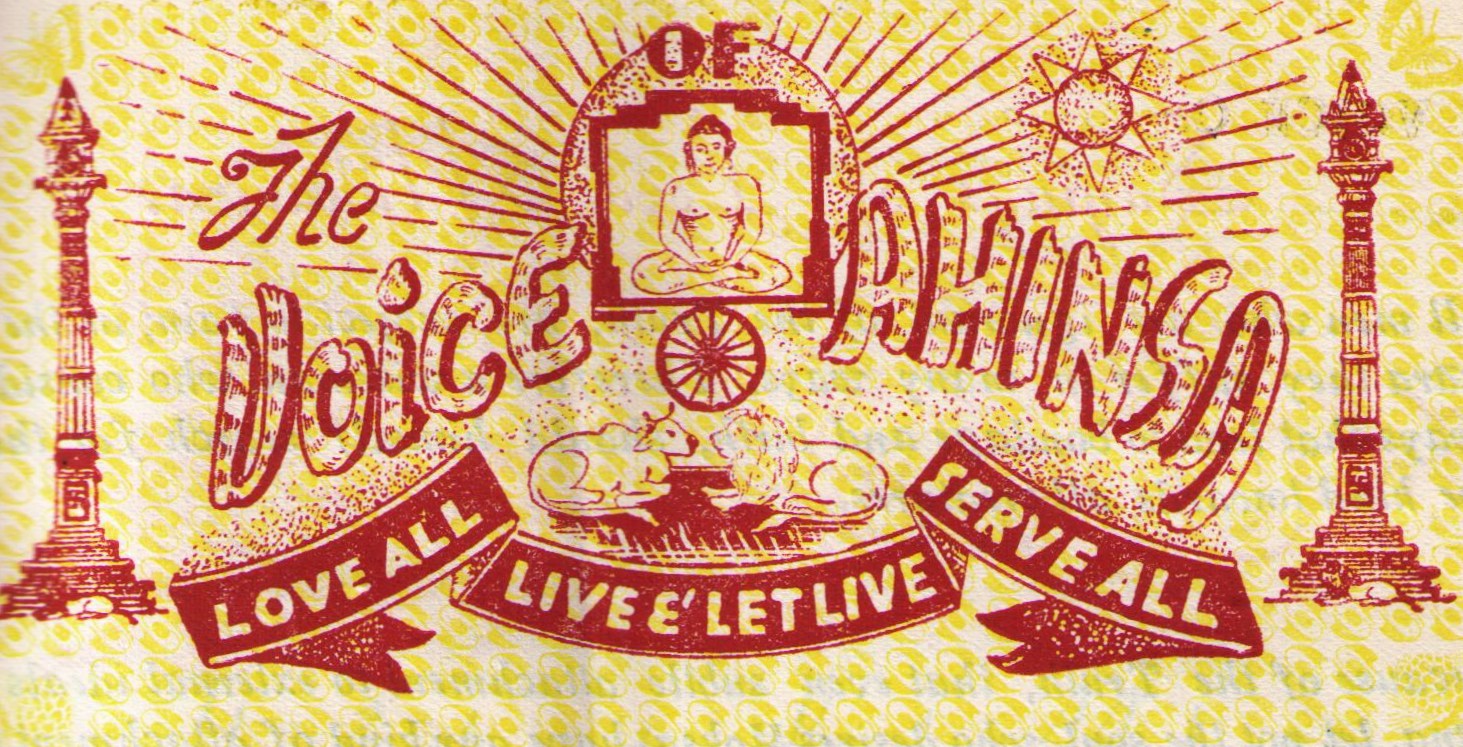
This paper by the Scholar of Religions Prof. Charles Samuel Braden was published in the Lord Mahavira Special Number of the periodical The Voice of Ahinsa (Vol. VI, No. 3-4, March-April 1956, pp. 71-72.
Mahāvīra and Jesus
In the course of a series of lectures on Jesus and the Other Founders of Religion which I gave recently at Northwestern University, Evanston, III, I considered among the other great founders of living faiths, Mahāvīra, founder of the modern Jainism. I pointed out a number of ways in which they resemble each other as well as ways in which they differ. The entire series will be available eventually, published by Prentice-Hall and Co. of New York, but in response to a request from the editor, I present here the point at which I think the likeness between them is greatest, exactly as it will appear in the book.
The point of greatest similarity in the ideas of Jesus and Mahāvīra lies in their attitude towards killing. Both were unalterably opposed to the taking of human life, and both were at one in their teaching and practice of non-violent resistance to those who sought to do them evil. Jesus words in the Sermon on the Mount are perfectly clear at this point.
“You have heard it said: 'Thou shalt love thy neighbor and hate thine enemy', but I say unto you, Love your enemies … pray for them that persecute you.
You have heard it said, 'an eye for an eye, a tooth for a tooth', but I say unto you, if anyone strike you on one cheek turn to him the other … if he asks your coat, give him your waistcoat also, if he compels you to go with him one mile, go with him two.”
This led Jesus when reviled to revile not again, when scourged, as he was, to seek no retaliation. “As a lamb before its shearers is dumb, so opened he not his mouth?” It led him when nailed to the cross to pray for his murderers, “Father forgive them, for they know not what they do.”

The Jaina Sūtras are full of stories of Mahāvīra and his calm non-resisting endurance of pain and mistreatment at the hands of his fellows. There is the account of a group of cruel villagers who finding the naked ascetic meditating in the countryside, lighted a fire between his feet to see if he would flinch. They are said even to have even tried to drive nails into his ears. Mahāvīra uttered not a word. In a certain country natives attacked him. Dogs were hurled on him. The Venerable one endured it being perfectly enlightened. He was struck with sticks, fists, lances, clods. When he once sat down, they cut his body, tore his hair, threw dust upon him. They tossed him into the air and let him fall.
“The Venerable one humbled himself and bore pain, free from desire … and bearing all hardships the Venerable one undisturbed, proceeded on the road to Nirvāna” (Ācārāṅga Sūtra, Sacred Books of the East, p. 85).
Mahāvīra went far beyond Jesus in the matter of not taking life, ahinsā. He not only would not take human life, but refrained from the destruction of even the lowest forms of life. As a novice, He brushed the pathway before him in order that he might not inadvertently step on and crush any insect or worm. He strained the water he drank, not to save himself, but to save the life that might be in the water. He would not even kill harmful insects.
Obviously this aversion to killing made him a pacifist, for war cannot be fought without killing - that is any kind but a “war without violence” such as Gandhi was to wage centuries later in order to win India's independence. Nor were his monks to engage in war. Later, I am told there arose an interpretation of his teaching, which did make a place for war in the life of the Jain layman, precisely as occurred also in the case of Jesus. Laymen, because of the practical difficulty of abstaining absolutely from hinsā, that is, injury to life, were taught to observe the principle of ahinsā, as far as possible. Thus I have found even the profession of soldier included in the list of activities in which a Jain laymen may lawfully engage, though Jains have not traditionally entered the armed services, I am told. I doubt if this could be justified on the basis of anything Mahāvīra himself taught or practiced. It is interesting that in recent years a Jain revival is taking place in India - and one feature of it is the publication of a magazine, The Voice of Ahinsā, which is said to be the basis of the world peace for which humanity so eagerly yearns.
Like Jesus, Mahāvīra gave utterance to the Golden Rule, negatively stated, characteristically extending it, however, specially to cover all creatures. It is stated thus:
“In happiness and suffering, in joy and grief, we should regard all creatures as we regard our own self, and should refrain from afflicting upon others such injury as would appear undesirable to us if inflicted upon ourselves.” (Sayings of Lord Mahāvīra, ed. by K. P. Jain, p. 6).
 Prof. Dr. Charles Samuel Braden
Prof. Dr. Charles Samuel Braden